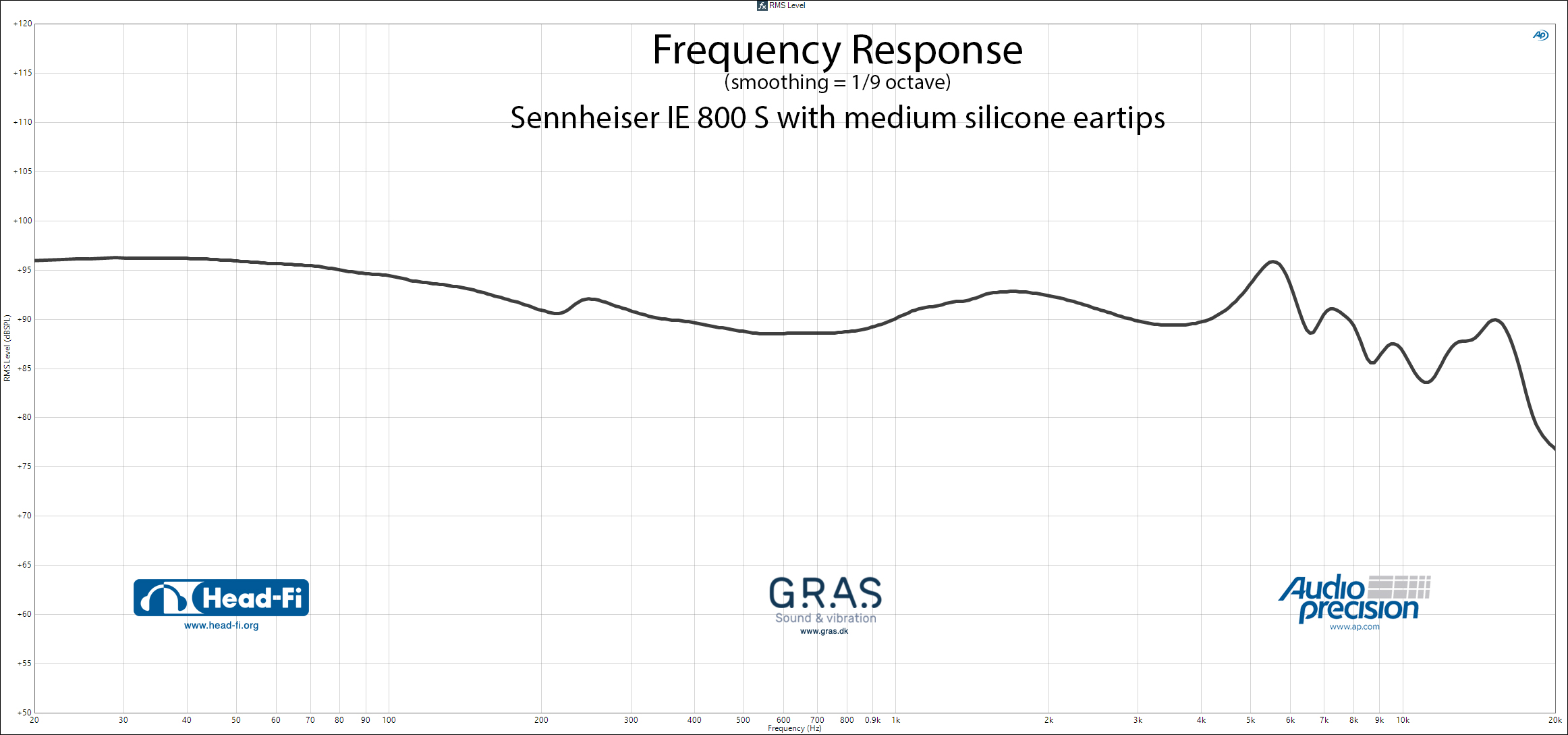- Joined
- Jun 20, 2001
- Posts
- 11,051
- Likes
- 7,030
NOTE 2017-11-15 02:20 EST: This thread is a copy of posts from a Sennheiser IE800S thread that ended up veering into more of a measurements discussion after I made this post (below). I've copied the posts that were more about headphone measurements as the primary topic (versus the IE800S impressions as a primary topic).
I didn't hear anything suggesting a 10 kHz peak, so we measured the IE800S today. Here's a preliminary frequency response measurement:

First impression: The Sennheiser IE800S improves on the IE800 with a greater sense of refinement -- the IE800S is less "fun" than the IE800 (in a good way), more precise (in a good way), with a more linear tonal balance. We're working on the Head-Fi Buying Guide update now, so I'll post a more thorough review (and probably more measurements) in there.
Here is the measurement system we used for the measurement above:
10khz got me spooked, usually not a fan of those 'airy' tunings when treble focus is so high up... hopefully crinacle and innerfidelity get to measure them for some more familiar context.
I didn't hear anything suggesting a 10 kHz peak, so we measured the IE800S today. Here's a preliminary frequency response measurement:

First impression: The Sennheiser IE800S improves on the IE800 with a greater sense of refinement -- the IE800S is less "fun" than the IE800 (in a good way), more precise (in a good way), with a more linear tonal balance. We're working on the Head-Fi Buying Guide update now, so I'll post a more thorough review (and probably more measurements) in there.
Here is the measurement system we used for the measurement above:
- GRAS 45BB-12 KEMAR with anthropometric pinnae for low-noise earphone and headphone testing
- Audio Precision APx555 Audio Analyzer
- Rupert Neve Designs RNHP headphone amplifier (set to unity gain)
- Herzan custom acoustic enclosure
Last edited:














































































